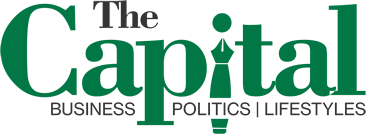Naira is projected to close this year at N356 to dollar, a report by Renaissance Capital (RenCap), an investment and research firm, has shown.
The local currency exchanges at N360 to dollar at the parallel market and will gain N4 against the dollar by year-end according to the report.
The report titled: ‘Nigeria: First Quarter 2018 Current Account – Surplus Swells’ , said Nigeria’s current account (CA) surplus increased to 4.6 per cent of Gross Domestic Product -GDP (annualized) in first quarter against 3.3 per cent in first quarter of last year.
“This was in part due to strong export growth of 44 per cent year-on-year in first quarter against 31 per cent in first quarter of last year. That said, imports are also recovering; they grew by the fastest rate since 2014. A one-third increase in current transfers (remittances) helped mitigate a strong increase in income outflows and payments to foreign service providers. We revise our 2018 CA/GDP forecast up slightly to 3.4 per cent, from 3.3 per cent previously. This supports naira stability and our year forecast is N356/$1,” it said.
It said Nigeria’s exports – of which 93 per cent were due to oil and gas – increased by 44 per cent year-on-year to $14.4 billion in first quarter. This is the highest exports have been since 2014. This expansion comes on the back of an 11 per cent year-on-year increase in oil production to 1.95mn b/d and a 36 per cent year-on-year increase in the oil price to $68/ barrel, on average, in first quarter.
RenCap said imports are recovering after nine-consecutive quarters of negative year-on-year growth, they started growing again in third quarter in 2017.
It said export earnings improve, on the back of higher prices and output, we saw a corresponding increase in payments to foreign service providers. “This is typical in commodity exporting countries, particularly oil exporters. Nigeria’s net services payments increased more than threefold YoY to $4.4bn in first quarter of this year. Net income payments increased by 44 per cent year-on-year, to $3.3 billion, implying that dividend and interest payments to foreign investors rose compared with a year earlier. These outflows were mitigated by a one-third increase in current transfers to $6.4 billion in first quarter,” it said.
Portfolio investment inflows saw a 12-fold increase year-on-year to $5.1 billion in first quarter; this is the highest quarterly inflow since 2013.
“This reflects the equity market rally in early 2018 driven by offshore investors attracted by valuations that looked cheap as against peers, continued confidence in the Investors & Exporters forex window, and the oil price rally. FDI remains subdued (flat year-on-year at $800 million in first quarter. Higher US Treasury yields and a strengthening dollar, plus uncertainty that typically precedes polls imply the slowdown in net portfolio inflows that started in May is likely to continue in second half of this year,” it said.



